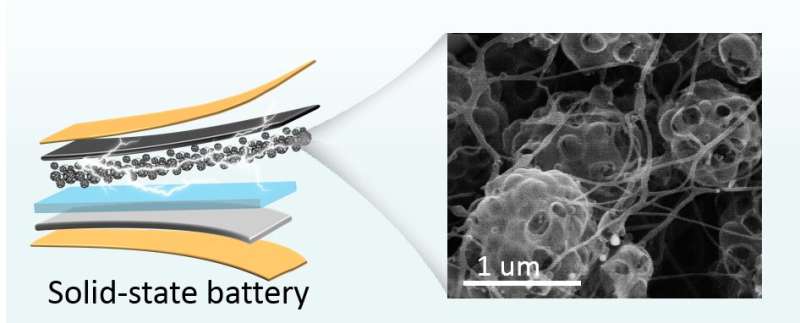Hierarchically porous carbon networks embedded with single iron sites for efficient oxygen reduction

Currently, oxygen reduction reaction (ORR) suffers from sluggish kinetics and high overpotential, which usually requires costly platinum (Pt)-based materials. Transition metal single-atom catalysts (M–N–C), such as Fe–N4 and Co–N4 with high ORR activity have been explored and considered to be the most promising catalysts for replacing precious metals. However, the low active site density and the thick catalyst layer in the electrode greatly hindered the mass transfer of the electrode. Various methods have been adopted to solve this problem—for example, using hierarchical porous structure and ultra-thin carbon spheres as carriers.
A team led by Dr. Shuangyin Wang (State Key Laboratory of Chemo/Bio-Sensing and Chemometrics, College of Chemistry and Chemical Engineering, the National Supercomputer Centers in Changsha, Hunan University) found that the catalysts reported so far exist in the form of nanostructured powders and require additional binders to form the catalyst layer, which severely reduced conductivity and mass transfer ability. It remains a big challenge to assemble the porous carbon into a 3D-integrated structure, and there's no simple and efficient method for preparing controllable pore structure within large-area electrodes.
"We are inspired by the neuronal structure of the organism's brain and develop an efficient strategy to fabricate self-supported flexible porous structure with the high density of B, F co-doped Fe single-atom sites (Fe–SA–FPCS). As can be seen from the picture, each porous carbon sphere is connected by several carbon fibers. This structure is very beneficial for the electron transport and for building the three-phase interface required for the reaction," Wang said.
Fe–SA–FPCS shows a high ORR half-wave potential (0.89 V vs. RHE), much higher than that of 20% Pt/C (0.83 V vs. RHE). When directly used as an electrode in liquid Zn–air batteries, Fe–SA–FPCS exhibits a high discharge power density of 168.4 mW cm−2 and superior durability. The solid-state flexible battery assembled by the Fe–SA–FPCS shows a stable charge–discharge capability at 1 mA cm−2. The excellent performance stems from the hierarchical pore structure, high density of active sites and conductive networks. The team showed that this synthetic protocol could be very useful for the production of promising electrode materials in the future.
The research was published in Science China Chemistry.
More information: Yanwei Zhu et al, Neuron-inspired design of hierarchically porous carbon networks embedded with single-iron sites for efficient oxygen reduction, Science China Chemistry (2022). DOI: 10.1007/s11426-022-1285-y
Provided by Science China Press





















